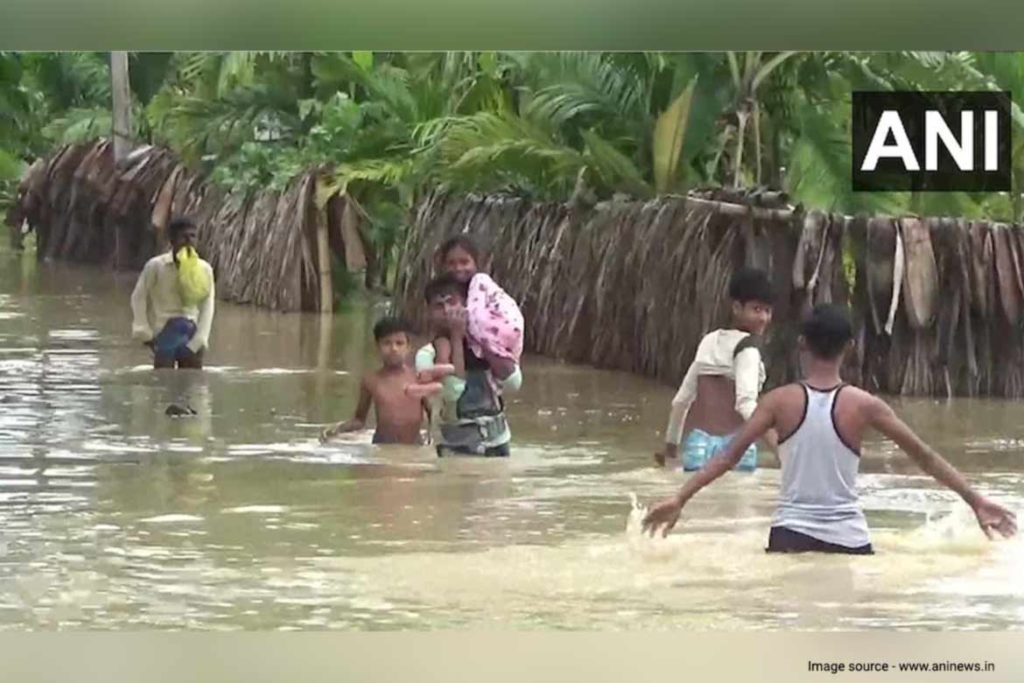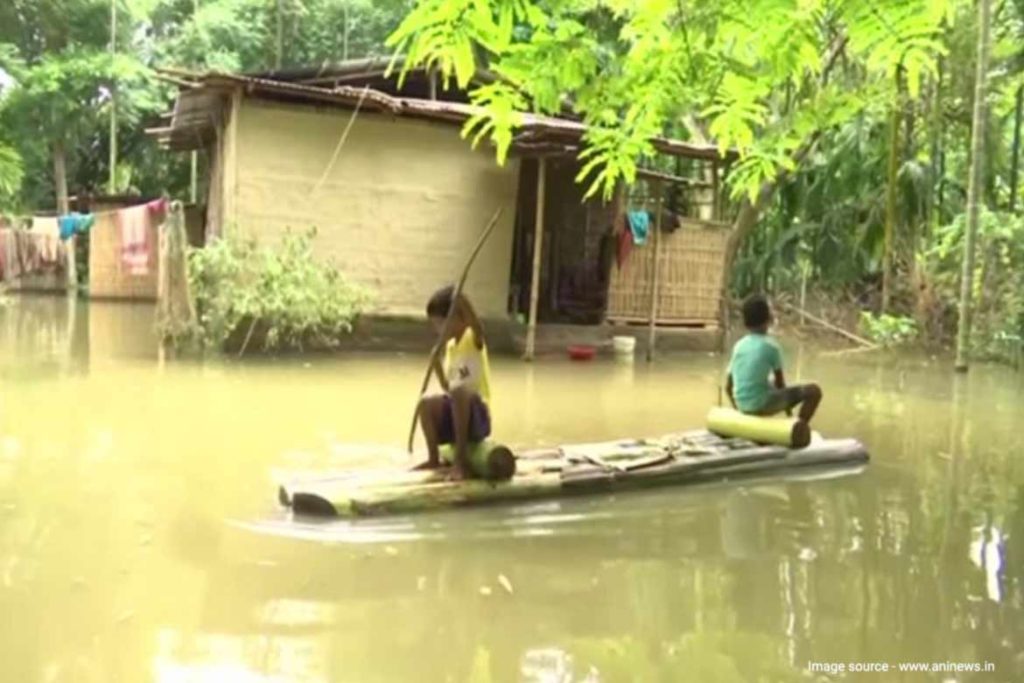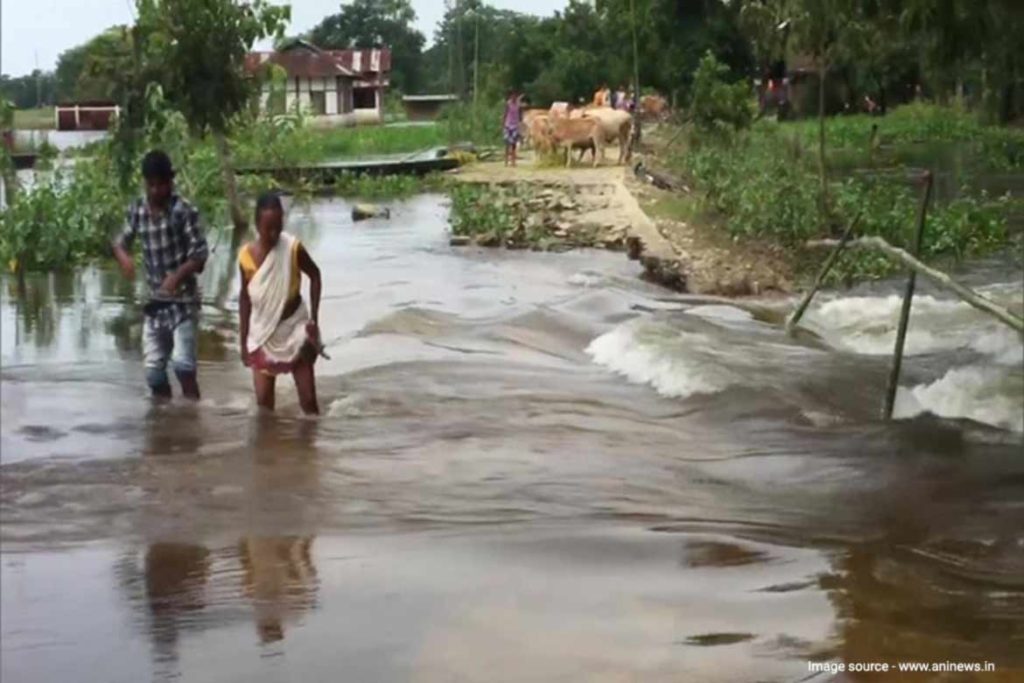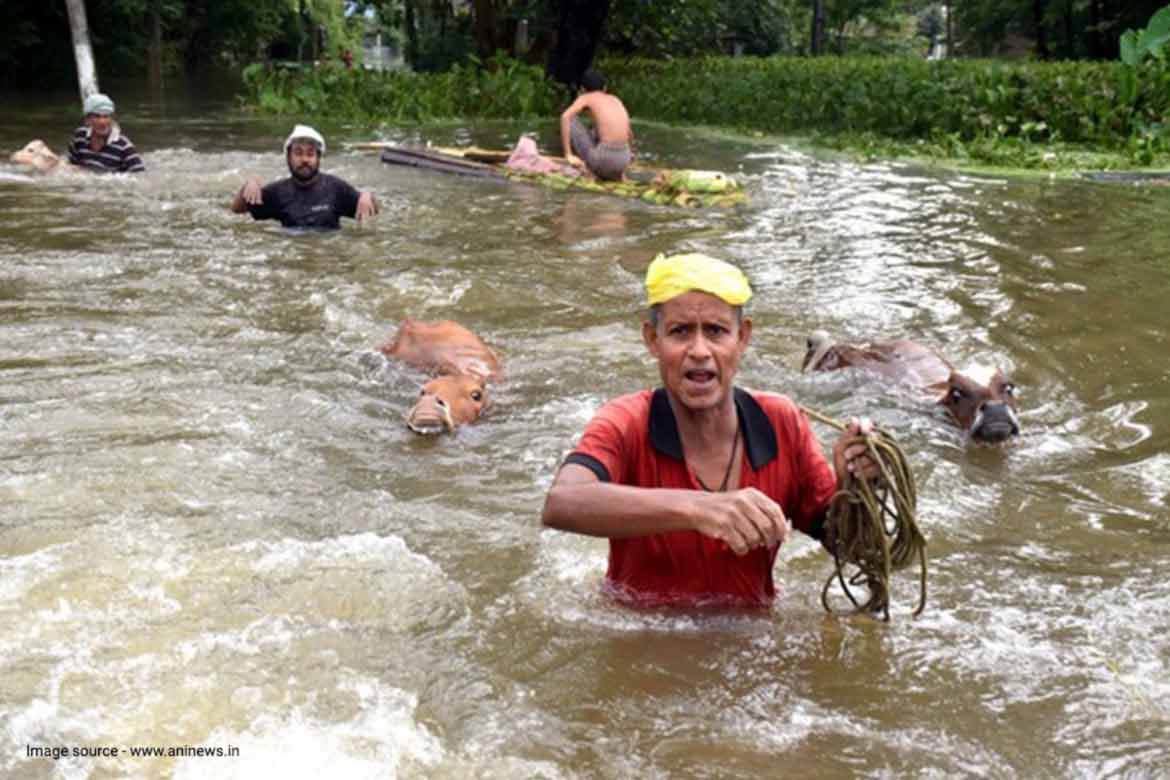Floods nearly always occur in the Brahmaputra Valley, which runs through the country’s northeast and leaves a trail of death and destruction in its wake. Even before the monsoon season started this year, relentless rains in Assam submerged most of the state, destroyed crops, and forced thousands of people to flee their homes.
In recent years, the amount of destruction brought on by floods has dramatically increased. It is crucial in this case to take into account the yearly flood situation in Assam and the contributing causes.
Major factors behind the floods in Assam every year:
Brahmaputra’s role:
Assam, which is part of the Himalayan foothills, is formed by the land of two river basins, the Brahmaputra and the Barak. The mighty Brahmaputra River rises in the Himalayas and flows through Arunachal Pradesh into India before merging with the Bay of Bengal. In Assam, it has an average width of 5.46 km and a length of roughly 650 km.
It is the most significant river that cuts across Assam’s flood plains. As soon as the slope is flattened, the river’s velocity suddenly decreases in the Assamese plains, and the sediments and other material the river carries are dumped in the river bed, raising the water level. Due to increased soil erosion brought on by glaciers melting, sedimentation rises during the summer.
Monsoon:

In North-East India, the monsoon season is severe. Assam experiences greatest yearly rainfall in June and July, with an average annual rainfall of 2900 mm, according to the State Disaster Management Authority. The Brahmaputra Valley receives 85% of its yearly rainfall during the monsoon season, according to the Assam Ministry of Water Resources. The valley also experiences significant rainfall in April and May as a result of cyclone activity, which results in flooding in June due to the severe rains.
Erosion in river bank:
Rivers carrying sediment and dirt from their banks are referred to as sedimentary rivers. Rivers grow as a result of this soil erosion, taking up more space and causing floods. For Assam, this erosion of the land near riverbanks has become a major issue. One of the main causes of internal migration of people is run-off of rural lands. Because to coastal erosion in some areas of Assam, the Brahmaputra has grown up to 15 kilometres wider.
Construction of embankments:
To alter a river’s course, embankments are created. However, this remedy has turned into a new difficulty in Assam over time. In order to reduce floods in Assam, embankments were initially built in the 1960s. Most of these embankments are either no longer functional or in poor condition after 60 years. Numerous of these were swept downstream by the river.
Rapid Population Increase:

The state’s ecosystem is under stress due to the state’s rapid population growth. The Brahmaputra Board reported that the population density in the Brahmaputra Valley increased from 9–29 people per square kilometre in the years 1940–1941 to 398 people per square kilometre in the Assamese plains during the 2011 Census.
Climate change:
Extreme rainfall occurrences would increase by 38%, according to a state government analysis. With the melting of glaciers brought on by an increase in temperature, continuous low or heavy rainfall in place of the typical monsoon rainfall would mean.
How floods disrupt the lives?
Animal-human conflict:
According to a formal announcement, the Brahmaputra’s flow exceeding the danger mark has caused more than 15% of Kaziranga National Park to be inundated. The animals come near the villages during floods, posing a threat to people and other wildlife.
Impact on Infrastructure:
Water logging on railroad tracks has caused disruptions in rail operations. All forms of transportation have ceased, with the exception of ferry services.
Roads and bridges have been severely damaged by the floodwaters.
Because they use river water to cool their equipment and return the hot water to the river, power plants are frequently built close to rivers. In many districts, electricity service has been cut off because of the floods.
The Brahmaputra river’s embankments have been breached due to the constant rains, submerging more than 5,000 communities and agricultural areas.
Floods do not just cause destruction to the human population. According to the ASDMA data, the present flood wave has affected 36 lakh people and has washed away almost 60,000 animals.
What steps may be made to prevent such havoc in future?

Read more: Amarnath yatra starts after 2 years; Heavy forces deployed, restrictions on food menu
Informational exchange:
More trustworthy information must be made available in order to improve pre-planning and provide residents with timely warnings. According to experts, this region needs stronger institutional and technologically sophisticated mechanisms to ensure that trustworthy and speedy warning systems operate effectively.
More protection for Kaziranga:
The importance of protecting animal corridors and maintaining safe access to the Karbi hills must be emphasised. A “landscape-scale conservation” strategy that acknowledges the significance of the Karbi Anglong hills must be used. As a sanctuary for animals during floods, the Karbi Anglong Highlands are the park’s lifeline.
Sluice gates:
Sluice gates should be built on the tributaries of the Brahmaputra and other rivers, such as the Barak, etc. This will turn out to be a wise move. Sluice gate valves, which can only seal in one way, are frequently used in rivers and canals to regulate water level and flow. They are also utilised in facilities that treat wastewater.
Research:
In Assam, a Center for Disaster Management should be developed to do research on the most effective ways to execute different strategies.
